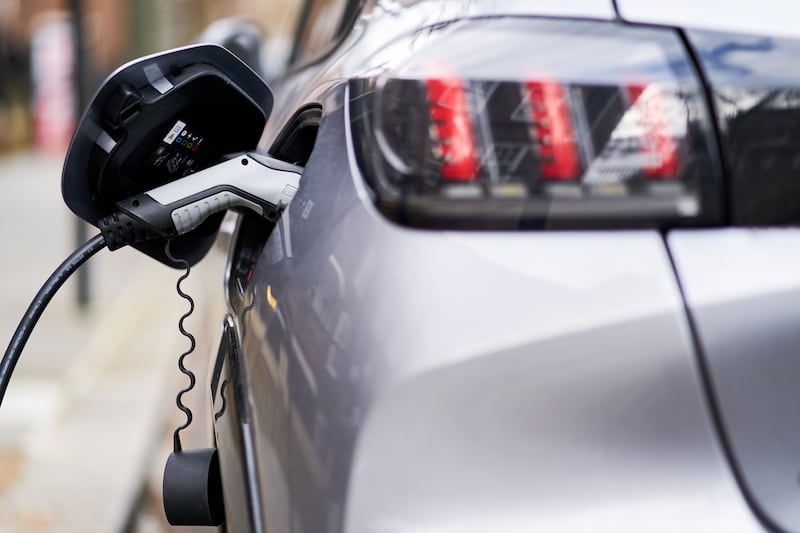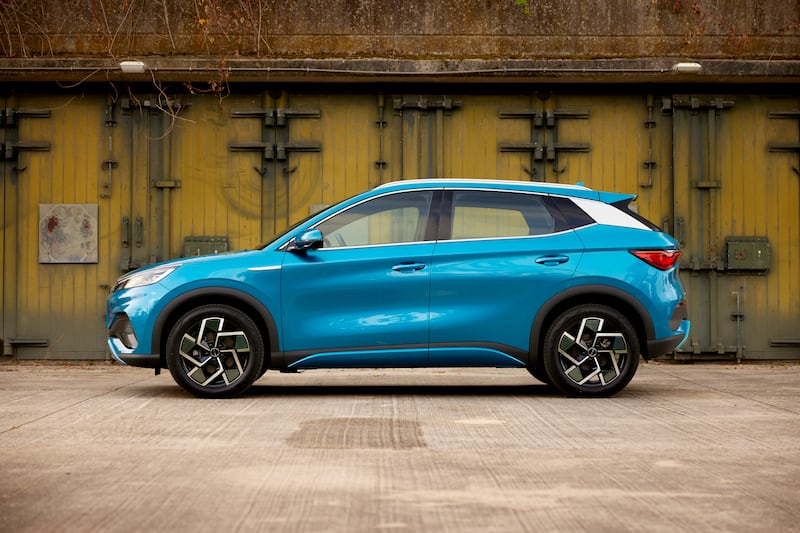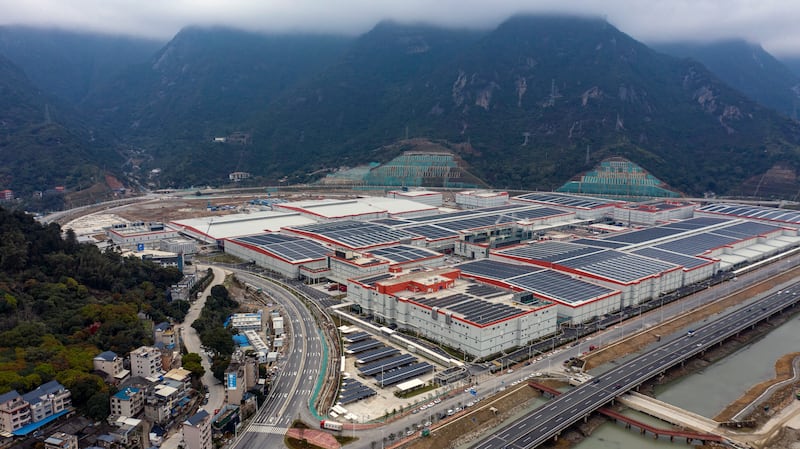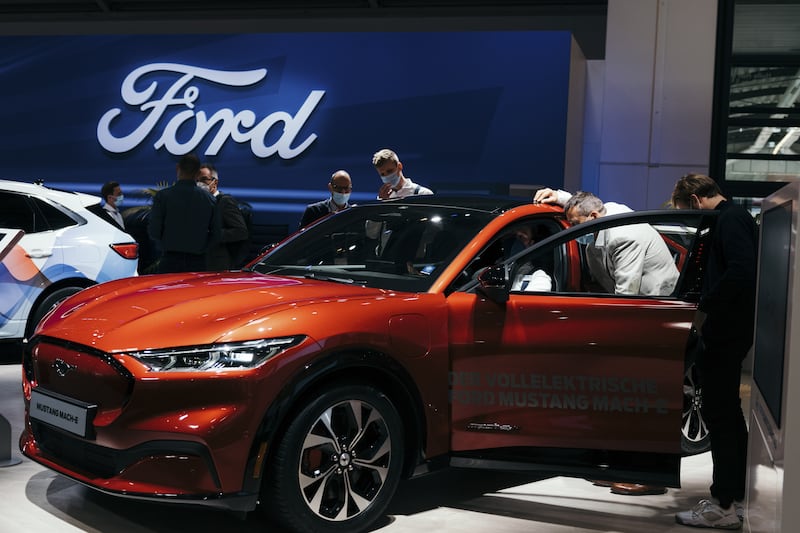The rise and dominance of Chinese car brands has been long predicted. As far back as the early 2000s, sage commentators and prognosticators were proclaiming that, eventually, we would all be driving Chinese cars.
Certainly the recent successes enjoyed by the likes of MG (once a tweed-and-driving-gloves British brand, now Chinese in all but its name) and BYD seem to confirm that impending domination, while the likes of Volvo and Polestar are European brands with Chinese ownership.
There’s a more fundamental way in which China now dominates the car world, though. Not only is China now the world’s largest global market for new car sales, China has long had a national policy, enacted by its myriad individual companies, of making sure that it has cornered the world market for the thing that we all now need – batteries.
If you’re driving a modern electric car, of any marque or apparent nationality, then the chances are that its most important component was either made in China, or used China-sourced minerals and components. When it comes to electric car batteries, China is king and kingmaker rolled into one.
READ MORE
In 2022, CATL made 34 per cent of all the world’s electric car batteries. The number of car makers with which it works is simply staggering – BMW, Mercedes, Hyundai, NIO, Peugeot, Opel, Citroen, Tesla, Toyota, Volkswagen, Honda, Volvo, and Ford
Indeed, so massive is China’s lead when it comes to battery design and manufacture, that consulting group Benchmark Minerals reckons that even by 2030, with all the billions of euro and dollars being invested in setting up Gigafactories in Europe, the US, Canada and elsewhere, China will still be making twice as many EV batteries as every other nation combined.
Who are these companies, which now dominate the battery marketplace?
The biggest of them all is the Contemporary Amperex Technology Co. Limited, better known as CATL. In 2022, CATL made 34 per cent of all the world’s electric car batteries. The number of car makers with which it works is simply staggering – BMW, Mercedes, Hyundai, NIO, Peugeot, Opel, Citroen, Tesla, Toyota, Volkswagen, Honda, Volvo, and Ford.

While CATL has long been a leader in what one might call the “orthodox” lithium-ion battery design, it’s also reckoned to be one of the world’s leaders when it comes to lithium iron phosphate (LFP) batteries, which are seen as a critical next step in battery design as they’re cheaper to build, and robust and reliable for a cost of a small bit of range. Ford has already announced that it’s going to build a factory in the US to make CATL’s LFP batteries for the Mustang Mach-E electric SUV – a move which has angered more than a few conservative US commentators, wary of China’s burgeoning automotive influence.
1,000km on one charge
CATL’s domination could yet extend further – the company revealed this year that it’s working on a new generation of lithium batteries which are twice as energy-efficient as current designs, and which could lead to batteries capable of 1,000km of range on one charge, yet which weigh as little as 200kg (for comparison, the 350km-range battery in an Opel Corsa-e weighs about 500kg). That’s a long-finger idea though; right now CATL is introducing a new battery, called the M3P, which offers a 15 per cent increase in energy density, allowing for more range on one charge.
In second place on the list is actually not a Chinese company – it’s LG Chem, a Korean battery giant which counts the likes of Tesla and General Motors as major clients. Japanese company Panasonic is in fourth place in the 2022 charts, while Korean company SK Innovation is in 5th place, closely followed by fellow Korean firm Samsung in 6th.
How, then, is China dominant? Well, in third place overall is BYD, Build Your Dreams, which started out as a battery company but which has since expanded into making cars, making so many cars that in 2022 it became the world’s biggest electric car maker. It’s now selling cars in Ireland, but you won’t have to look to the local dealership to find a BYD battery – if you’ve got a smartphone, there’s a better-than-average chance that its battery was made by BYD, so ubiquitous are the company’s designs. It’s new “Blade” LFP battery is so tough that BYD actually makes it part of the whole structure of its cars, boosting safety – so BYD claims – and minimising weight.

Jinsuang-based CALB Batteries is in 7th place in the global charts, 8th is Guoxuan, 9th is Sunwoda, based in Shenzen, and in 10th place is S-Volt, which is actually a spin-off from the massive Chinese car maker Great Wall Motors.
All told, Chinese battery makers last year accounted for 56 per cent of all EV batteries made. That doesn’t sound like the most massive lead in the world – if LG, SK, Samsung, and Panasonic all increased their share by 1.5 per cent each, the Chinese advantage would be wiped out – but it’s not just about the finished batteries. China also controls, quite deliberately, huge swathes of the materials needed to make batteries. Any battery. Anywhere.

According to The New York Times, China controls 41 per cent of the world’s cobalt reserves, not because there’s lots of cobalt in China – there isn’t – but because Chinese firms have been buying up cobalt mines in The Democratic Republic of Congo, where most of the world’s cobalt reserves are to be found. Meanwhile, 28 per cent of the world’s lithium – without which an EV battery is merely an assembly of expensive, but useless, parts – is controlled by China. By 2027, it’s expected that China will be in charge of most of the world’s nickel supplies – another critical battery component – thanks to vast investments in Indonesia. China already controls 78 per cent of the world’s graphite stocks, and by weight graphite is the most-used material in an electric car battery.
quite some time ago, China, with orders from the top of the ruling Communist Party, put itself on a deliberate, calculated trajectory to become the world’s dominant electric car power. That strategy has worked, in spades
That’s only talking about the raw, freshly-mined material – if you want to get that material refined and processed into something that can actually be used in a battery, then once again you go to China. 95 per cent of the world’s manganese supply is processed there, ditto 73 per cent of cobalt, 70 per cent of graphite, 67 per cent of lithium, and 63 per cent of nickel, according to consulting firm CRU Group.
None of this is meant to be China-bashing – it’s merely to point out that, quite some time ago, China, with orders from the top of the ruling Communist Party, put itself on a deliberate, calculated trajectory to become the world’s dominant electric car power. That strategy has worked, in spades.
Darwinian whittling
Can what one might superficially call “the West” catch up? It won’t be easy. Right now, there is an explosion in new car firms in China. Aiways, Avatr, Hongki, Arcfox, Dayun, Leapmotor, Rising, Aito, Skyworth, Li, YuanHang, Poer, Neta, Jaecoo, Ruilan – all had models on display at this year’s Shanghai motor show. Some of those brands – Aiways and Hongki – are well known, albeit not selling many cars outside of China as yet, but almost all have eyes on export markets.
The thing is, it’s expected that many of these car companies will actually fail, and that’s precisely what the Chinese government is happy to allow. The idea is to encourage as many start-ups as possible, to generate as many ideas and innovations, and then allow a brutal, Darwinian whittling to take place. In a country with guaranteed employment, the workers in those companies won’t end up on the breadline.
In Europe, the US, Japan, and Korea, things are hugely different. Even in the UK, which essentially has no ownership of its own car industry (Jaguar, Land Rover, Vauxhall, Mini, Bentley, and Rolls-Royce are all owned by European and Indian conglomerates), the car industry contributes £14 billion (€16.3 billion) to the economy. To go through the whittling process that China envisages, putting thousands of people out of work in the process, would cripple the nation.
Meanwhile, many of the world’s big car makers are treading softly when it comes to electric, fearful of making too big a leap too soon for it to be profitable. Toyota continues to drag its electric feet, wary of both profitability and reliability. Ford made a loss of $66,000 on each electric car it sold last year – each and every one – something that it could only afford to do because it makes so much profits from continuing to sell pickups and SUVs with petrol engines. Even forward-looking Kia recently admitted that its own electric revolution – something it’s making a better fist of than almost any European or Japanese rival – would have to be paid for out of the profits of cars with combustion engines. That’s a free-market logic as brutal in its own way as China’s top-down command economy.

[ Volkswagen plans EV battery revolution at new gigafactoryOpens in new window ]
Would you consider buying a Chinese or Chinese-owned car? More than 2,200 Irish buyers so far this year already have, putting their money across the desks of MG, BYD, Polestar, and Volvo dealers. Many more are less wittingly doing so by buying cars from familiar brands that are using Chinese batteries.
To many, that will be fair enough. After all, China is merely a competitor on the global business stage, and if its companies make products people like, at prices they can afford, then who’s to complain? Well, one complainer is Carlos Tavares, head of the massive Stellantis Group, which includes brands such as Peugeot, Citroen, Opel, Fiat, Jeep, Alfa Romeo and more.
Earlier this year at the Consumer Electronics Show in Las Vegas, Tavares warned publication Automobilwoche that a “terrible fight” is on the horizon between European and Chinese car makers, in which it’s possible – maybe even likely – that the Europeans will have to drastically scale back production and jobs in the face of Chinese competition. “Regulation in Europe ensures that electric cars built in Europe are about 40 per cent more expensive than comparable vehicles made in China” said Tavares. “If you keep the European market open, then we have no choice: we have to fight the Chinese directly. And that applies to the entire automotive value chain. The consequences would then be significant, and that would inevitably lead to unpopular decisions.”


















